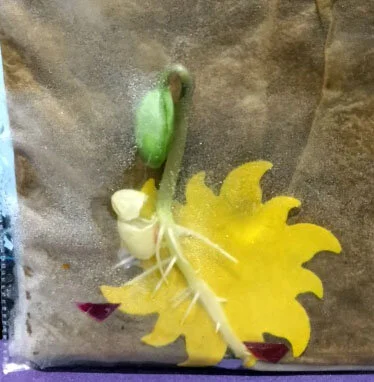Grades K-3: In this lesson, students will model what a seed needs to germinate and a plant needs to survive by creating a wearable mini greenhouse. Modifications of this lesson are provided for the different grade level NGSS.
Read MoreHave students learn all about poinsettias, their unique parts, and their role in holiday traditions. A coloring page is included.
Read MorePrimary: Students will use their senses to evaluate different types of apples and select their favorite. Students will write an opinion piece with supporting reasons, and students will develop a bar chart to report results.
Read MoreKentucky farms annually harvest more than 1,000 watermelon acres, making it the Commonwealth’s second largest fresh market produce by area.
Read MoreLearn the life cycle, jobs, and communication skills of honey bees!
Read MoreGrades 4+: Students will develop an appreciation and understanding of the natural development of seeds, learn the anatomy and function of each seed part through a seed dissection, and classify seeds as monocots or dicots.
Read MorePrimary: Students will construct a diagram of an apple tree’s life cycle and learn the importance of pollinators.
Read MoreSecondary: This lesson uses a real-world scenario of designing a garden with the hopes of selling the produce it generates. Version here is developed for secondary students and could be paired with lessons on economics, plant science, meal planning, and business planning/financial literacy.
Read MoreThis lesson allows students to design and plant a garden while using several math skills to determine angles and ratios. There is a modified version of the lesson if you do not wish to actually plant and harvest the produce.
Read MoreGRADE LEVEL: K-12 This is a comprehensive guide to school gardening and catalog of corresponding lessons made possible from a USDA grant and assistance from the Kentucky Farm Bureau.
Read More










